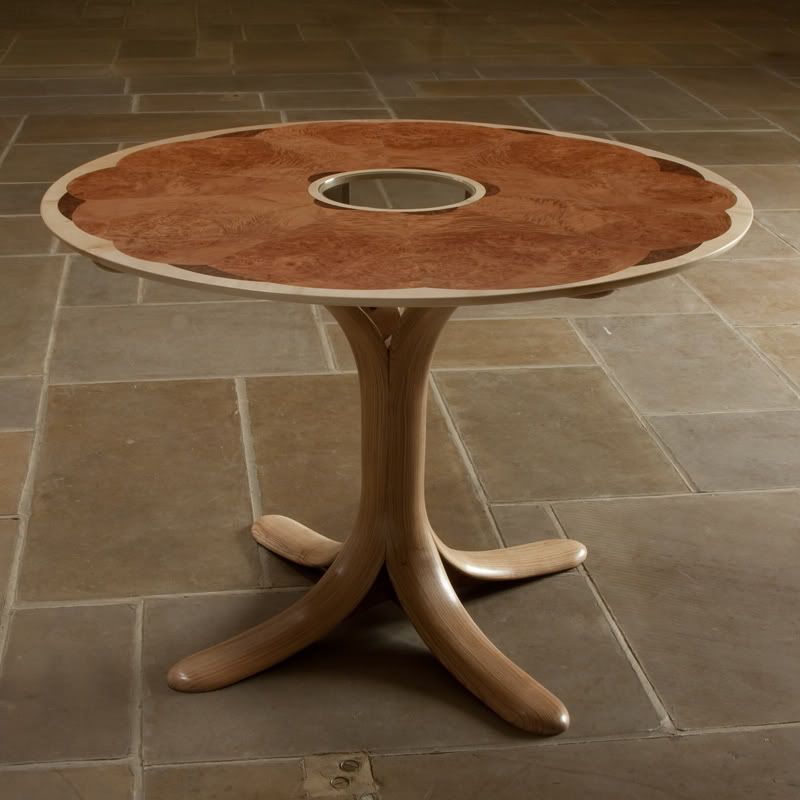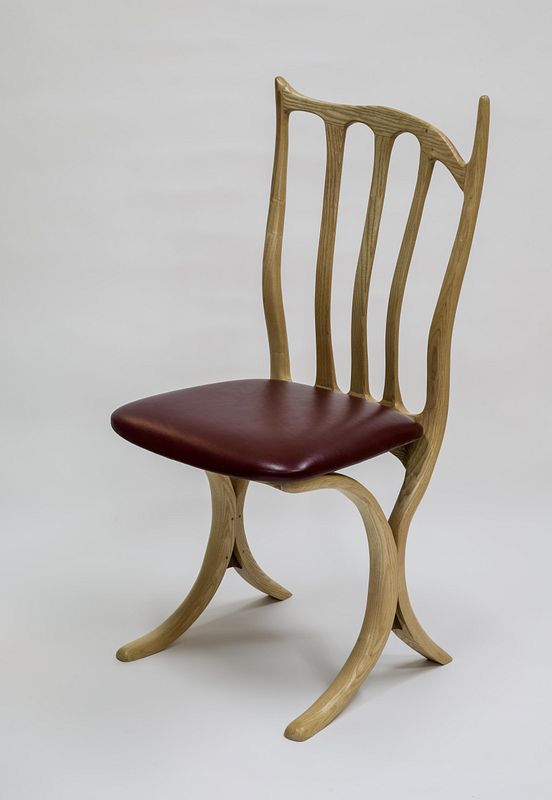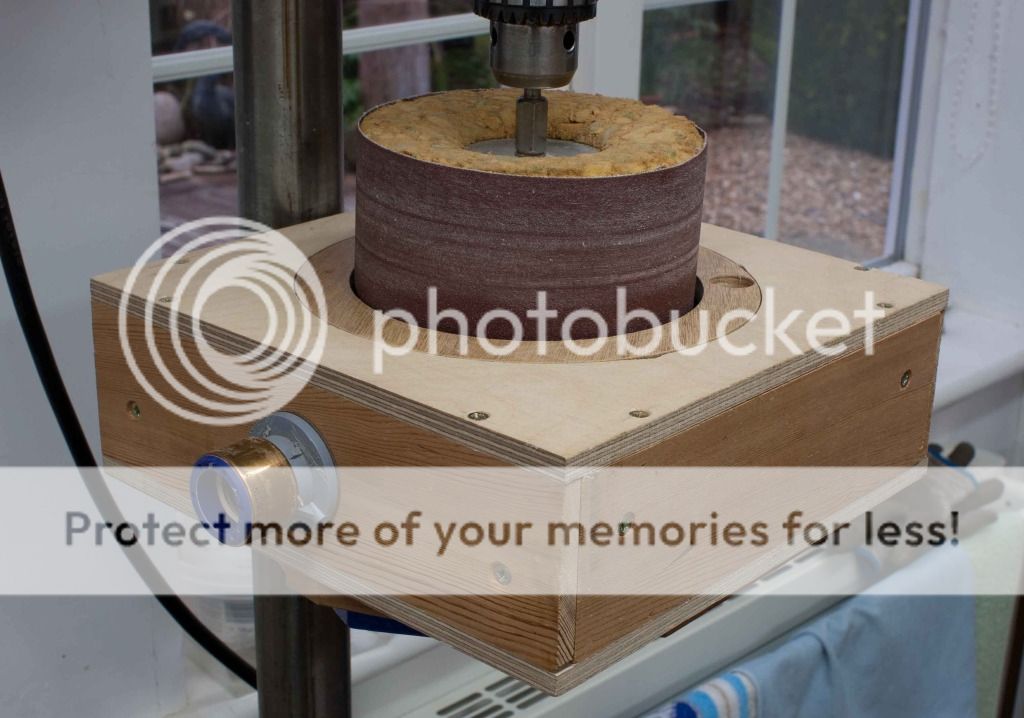Just come across this thread and thought my own experiences might be of interest. I have made two organically inspired pieces.
The first was this table
The legs are steam bent ash but there is still a lot of shaping.
The second is this chair - of which I'm currently making three more, all a little different - to go with the table
Both the table and chairs are completely my own design, but the latter are much more complex. The chair legs and other parts are steam bent two or three part laminations in green ash (much better for bending). The major i.e. front to back curves are steam bent but the side to side curves are formed by having wide components (75mm in the case of the back legs) which are then shaped and carved in all planes.
The difference between what I have done and what you are contemplating is in the shaping techniques used. When I started I too had in mind the sort of techniques you are considering - angle grinders, power carvers etc., but I took a very different route for a number of reasons, the main one being that I wanted to enjoy the process, followed quite closely by the fact that I was all too aware that while modern power carving tools can be used with a lot of delicacy and it would be all too easy to have a major disaster at a point where I already had a big time investment in a piece. I too am a pretty obsessive perfectionist but I also enjoy using hand tools which have the advantage of producing only quiet satisfying noises and minimal dust.
My arsenal includes draw knives - capable of removing a lot of material in a short time, but also offering considerable delicacy. I have a large Ashley Iles version which I have used very little and th small (4” blade length) Veritas carvers draw knife which is a really great little tool which I havew used a lot. Flat and radius soled spoke shaves – I have the aptly named Woodjoy ones from Classic Hand Tools – pricey but worth every penny. Rasps - the hand stitched European ones from Workshop Heaven, a lot cheaper than Auriou but work well, and round Microplanes – much used and excellent. Also a 14" farriers rasp which is great for removing a lot of material quickly. Apart from the absence of noise and all-pervading dust, the big plus of working with hand tools is what it teaches about power and delicacy but also dealing with changing grain direction as it changes in the round and last but not least the pleasure of the process.
However, there is no getting away from the fact that there is an awful lot of sanding involved, particularly in smoothing and refining curves. My experience has been that in shaping and refining organic curves, conventional sanding machines are of little or no use. For shaping I have used a range of different sized drum sanders equipped with 80 grit paper. Some of the basic work can be done with them in a pillar drill. I do this in conjunction with this extractor box which when connected to a shop vac extracts pretty much all the dust. It has reducing insert rings for different size drums – my smallest is about half an inch diameter.
But these drums are at their most versatile used in a small battery drill. And a lot of the work was done in this. But these sanders create a lot of dust and protection is vital. I have a three pronged approach to this. First I have a Microclene filter
https://www.classichandtools.com/acatalog/Microclene-Dust-Filters.html
While not quiet these create a powerful draft which with the filter placed a foot or two away on the bench the other side of the work draws a lot of the dust away and captures it. My second and third lines of defence are a powered respirator and a Sundstrom replaceable filter facemask which I swap between depending how I feel! The respirator is more comfortable but a bit weighty on the head and the shield does remove you from the work a bit. The Sundstrom is comfortable and has very sensitive valves so breathing feels very natural and it is not expensive. Lastly, I would urge you to vacuum youself down with the mask or respirator still in place before finishing work – it also helps in relations with ones dearly beloved!
I hope that these comments are, if not helpful, at least food for thought.
Jim



































